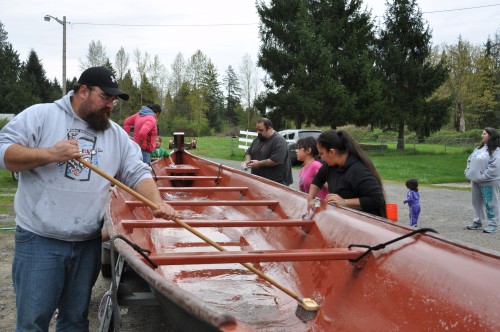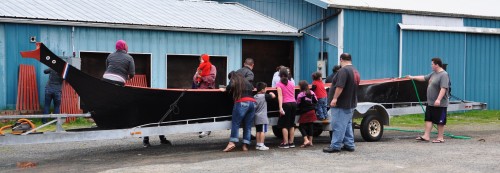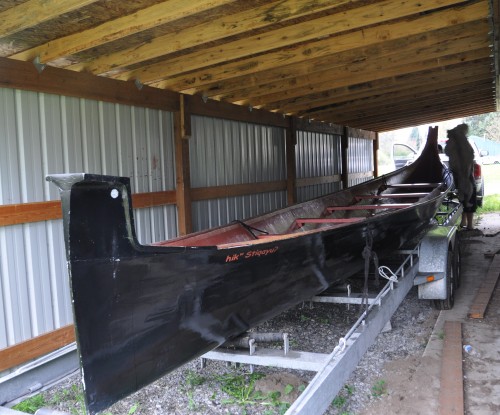By Bill Donovan, Navajo Times
Coming as a surprise to everyone, especially members of the Navajo Tribe, Obi-Wan Kenobi will soon say, “May the Force be with you” in the Diné language.
Navajo members will soon be able to hear the beloved character from the Star Wars Saga say this and more as the Navajo Nation Museum, Navajo Parks and Recreation, and Lucasfilm, Ltd. have joined forces to dub Episode IV of the classic space fantasy film, Star Wars into the Diné language. This marks the first time that a mainstream movie will be dubbed into the Navajo language.
Manuelito Wheeler, the director of the Navajo Nation Museum, said he’s been working on the idea of getting a popular film dubbed into Navajo for more than three years as a way to preserve the Navajo language.
“By preserving the Navajo language and encouraging Navajo youth to learn their language, we will also be preserving Navajo culture,” Wheeler said.
He said when he approached Lucasfilm officials with the idea, he found that they were excited about the project.
“Since its inception, the Star Wars Saga has been experienced and shared all over the world. Its timeless themes of good versus evil have resonated with cultures far and wide. The movies have been translated across multiple languages and Lucasfilm Ltd. is proud to have Navajo as its most recent addition.”
The first hurdle, Wheeler said, was to come up with the funding it would take to do the dubbing but with the generous help of the Navajo Parks and Recreation Department that has finally been done.
“Navajo Parks and Recreation Department is proud and honored to be a part of this innovative and entertaining approach to helping preserve our Navajo language,” said Martin Begaye, department director.
The Navajo Nation Museum is now working with Deluxe Studio and plans are underway to dub the movie into the Navajo language using a group of Navajo-speaking members, who will be going over each spoken word in the movie and translating it into the Diné language.
Shana Priesz, senior director of Localization at Deluxe said, “While we have dubbed many films in the past into a variety of languages, this project ranks among the most significant. Every time we dub a film, we recognize the fact that we are helping to bridge cultural and communications gaps among societies. In this case, however, we have the unique privilege of contributing to the preservation of a storied and noble culture, the Navajo.
“The staff at Deluxe is looking forward to traveling to Navajo Nation to supervise the adaptation and recording process. It’s always a challenge to dub a complicated film like Star Wars, but we welcome the challenge and look forward to learning a lot about the Navajo from our hosts. We are confident that working together with native speakers, we will be able to produce a final product that creates joy and pride from viewers and contributors alike.”
Wheeler said this group consists not only of linguists but young Navajos and even a Navajo actress, who are all Navajo speakers.
“This is going to be a challenge since there are many words in the movie for which there are no counterpart in the Navajo language,” Wheeler said. “The Navajo language is a descriptive language that, in many cases, uses a description of what the word does to relay its meaning. This results in a word in English taking several words in Navajo to convey the same meaning.
“That’s going to make it difficult at times,” added Wheeler. “What we don’t want is a situation like what people saw in the old Kung fu movies when the lip movements didn’t coincide at all with what was said. I don’t want to disparage the Kung fu movies because I loved watching them, but this can become very distracting and we don’t want to see that happen here.”
This means the linguists will have to work with the dubbing director to ensure that the adaptation is done well, said Wheeler.
One of the best dubbing directors in the business, Richard Epcar, has been tapped for this project. He is a well-known voice actor and director who has directed dubs of many projects including many Academy Award winning films.
The next step in the process will be casting men and women fluent in Navajo to be voice actors.
Auditions for the roles of Luke Skywalker, Darth Vader, Princess Leia, Han Solo, C-3PO, Obi-Wan Kenobi and Grand Moff Tarkin will be held at the Navajo Nation Museum on Friday, May 3 and Saturday, May 4.
If you are interested in trying out, call 928-871-7941 to book your time slot.
Walk-ins are welcome as well.
The tribe isn’t necessarily looking for people who sound like Harrison Ford, Carrie Fisher, Mark Hamill or the others, but rather for performers who have the ability to speak the dialogue with the force and emotions of the original actors, according to Wheeler.
The plans are to premier the Navajo version of the movie at the upcoming Fourth of July fair. While this will be an educational tool for those learning Navajo, Wheeler stressed that the main purpose is to encourage the preservation of the language and to show that the language is still vital today.
Since this is a cultural project, there will be no admission charged to see the movie. Wheeler said he hopes that the success of this project could result in more funds to be made available to do projects like this in the future that promote the Navajo language and Navajo culture, and encourage young Navajos to seek out more about their heritage.











